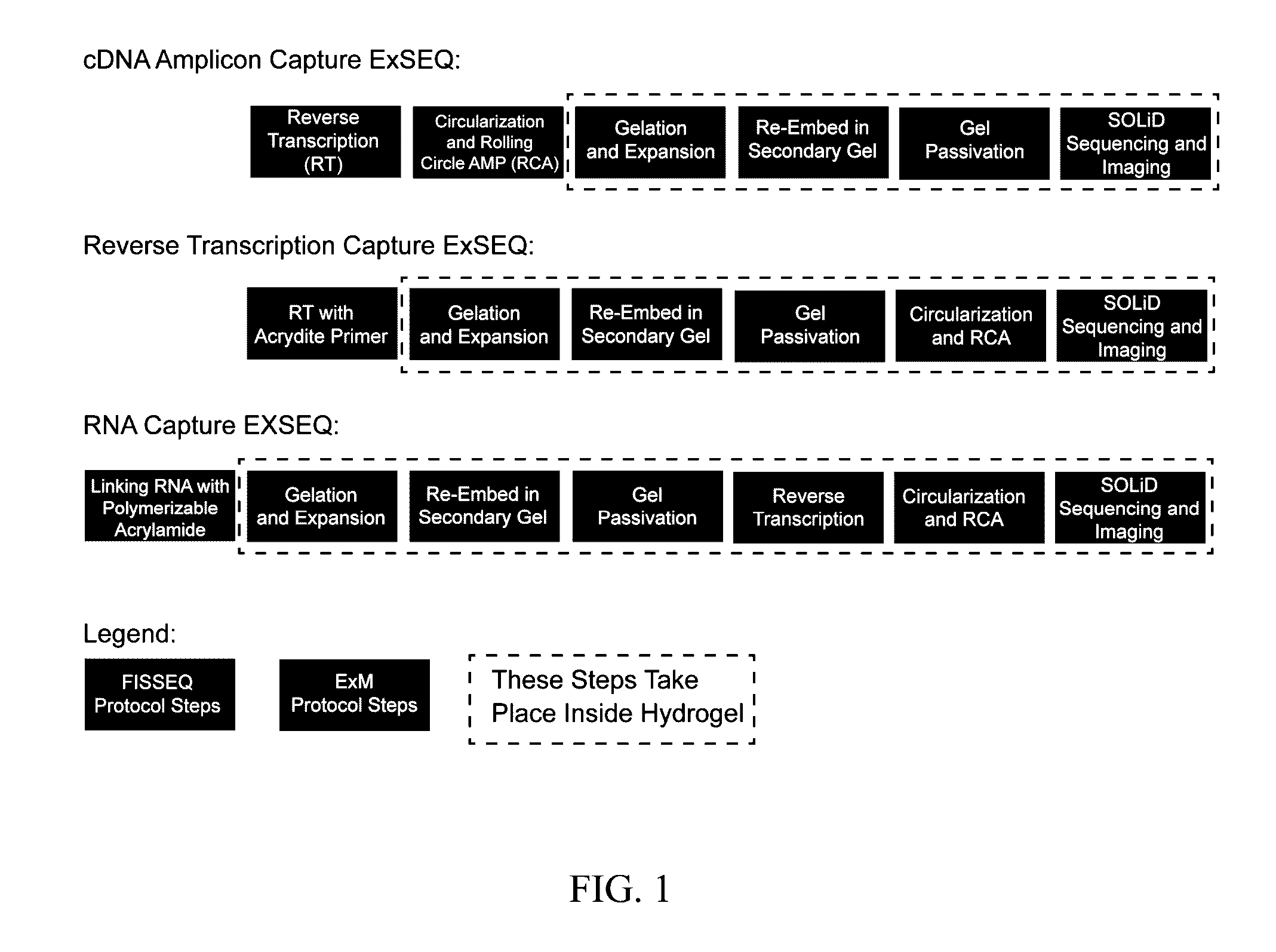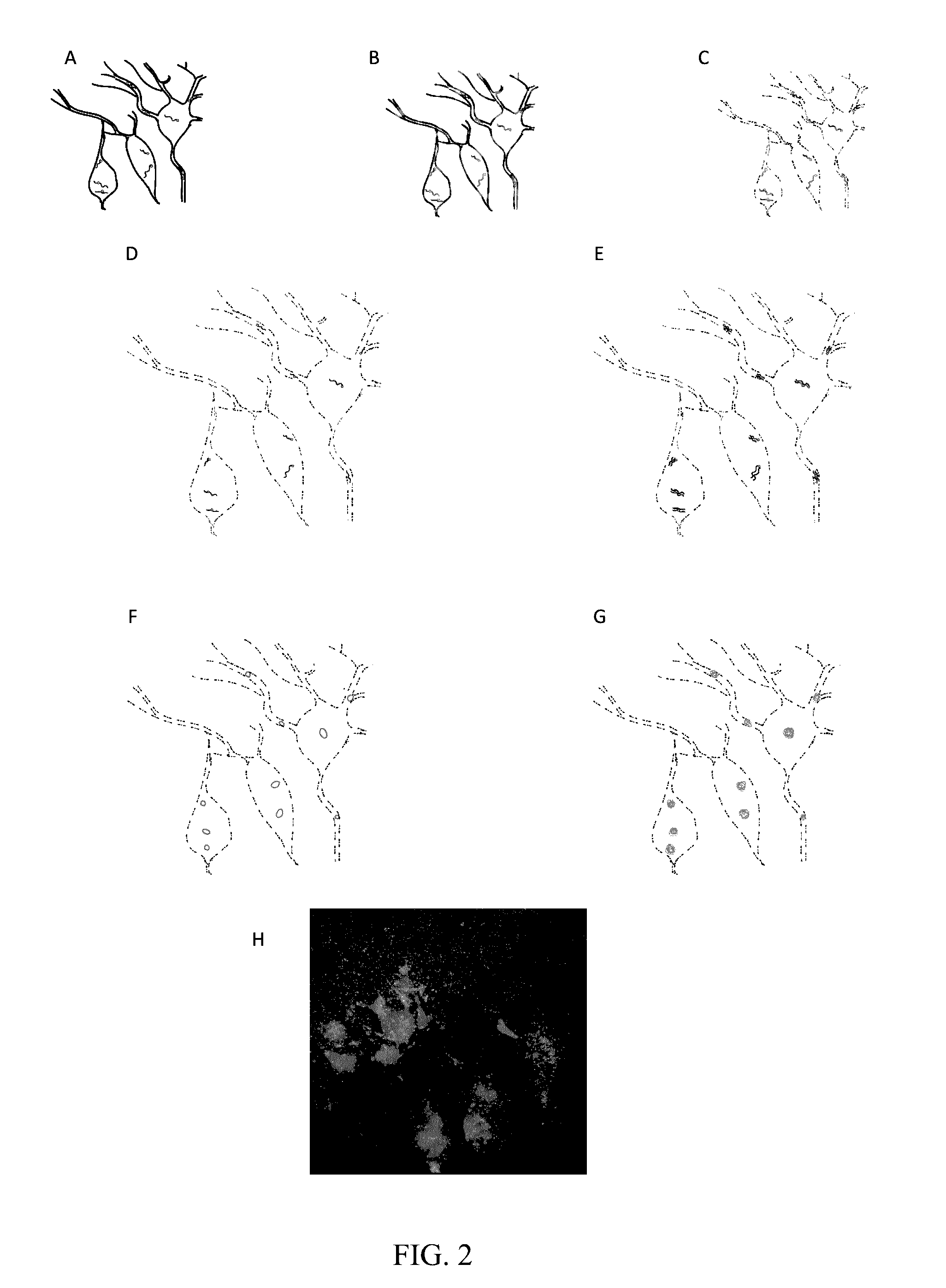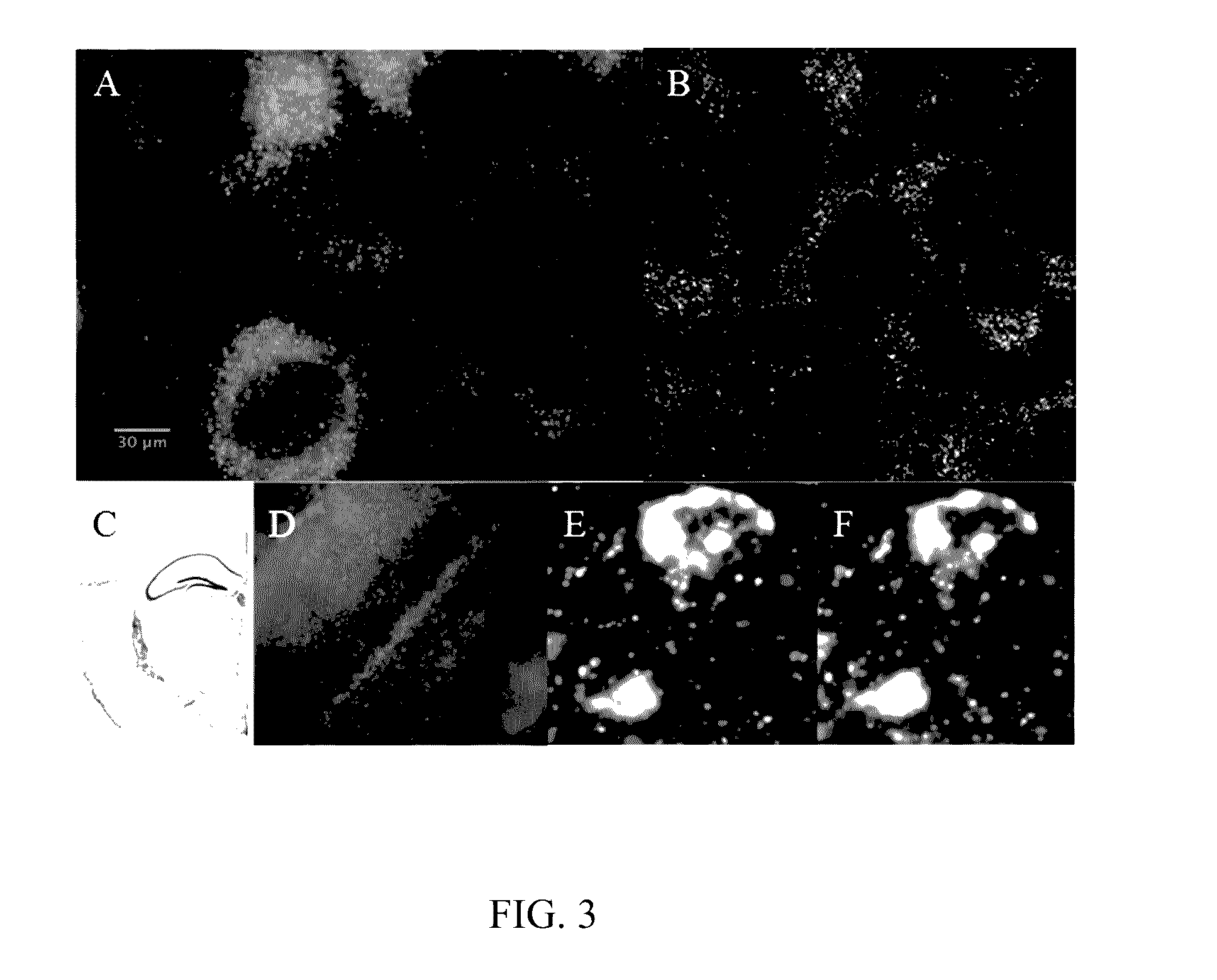In situ nucleic acid sequencing of expanded biological samples
a nucleic acid and biological sample technology, applied in the field of in situ nucleic acid sequencing of expanded biological samples, can solve the problems of inability to study multiple biomolecules at the same time, limited number of biomolecules that can be studied simultaneously, and loss of spatial information in the process
- Summary
- Abstract
- Description
- Claims
- Application Information
AI Technical Summary
Benefits of technology
Problems solved by technology
Method used
Image
Examples
example 1
Demonstration of ExSEQ
[0064]To demonstrate ExSEQ, we have expanded human HeLa cell lines and a slice of mouse hippocampus and generated libraries of cDNA amplicons using the chemical RNA capture strategy (FIG. 2 and FIG. 3). Next, we sequenced 32 bases of the cDNA amplicons in expanded mouse hippocampus in situ (FIG. 3). As expected, most of the cDNA mapped to the correct annotated strand of known mRNA. Importantly, the highly expressed cDNA mapped to known neuronal genes, including neurotransmitter transporters, channels, and receptors. The yield obtained and the sequence identities of the cDNA provide evidence that ExSEQ can indeed quantify the transcriptome in expanded tissues in situ.
[0065]Brief materials and methods used to create the data described in FIGS. 2 and 3: for the mouse hippocampus data, Thy1-YFP (Tg(Thy1-YFP)16Jrs) male mice in the age range 6-8 weeks were anesthetized with isoflurane and perfused transcardially with ice cold 4% paraformaldehyde. Brains were dissect...
PUM
 Login to View More
Login to View More Abstract
Description
Claims
Application Information
 Login to View More
Login to View More - R&D
- Intellectual Property
- Life Sciences
- Materials
- Tech Scout
- Unparalleled Data Quality
- Higher Quality Content
- 60% Fewer Hallucinations
Browse by: Latest US Patents, China's latest patents, Technical Efficacy Thesaurus, Application Domain, Technology Topic, Popular Technical Reports.
© 2025 PatSnap. All rights reserved.Legal|Privacy policy|Modern Slavery Act Transparency Statement|Sitemap|About US| Contact US: help@patsnap.com



